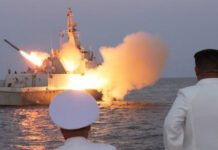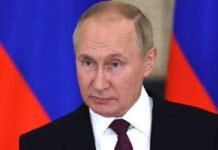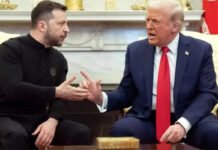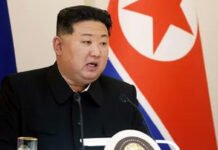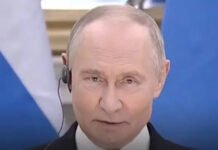– Editorial Articles By Zakir Hussein –
The emergence of a strategic triangular alliance between Russia, North Korea, and China has triggered a seismic shift in the global balance of power. As international observers monitor the geopolitical reorientation unfolding across continents, the axis signals a stark transformation of military, economic, and diplomatic structures. This evolving coalition, forged amid intensifying Western sanctions, the Russia-Ukraine war, and growing Asia-Pacific tensions, is no longer a speculative alignment—it is a calculated partnership recalibrating the global order.
A Powerful Triad: Military, Economic, and Diplomatic Foundations
At the heart of this trilateral coalition lies a convergence of core strengths:
Russia, militarily resilient despite sanctions, possesses a vast nuclear arsenal, world-leading energy exports, and a formidable industrial military complex.
North Korea, long isolated yet self-reliant, brings to the alliance mass production of conventional weaponry, ballistic missile expertise, and cyber warfare capabilities.
China, the second-largest global economy, serves as the alliance’s economic engine, supplying critical infrastructure, advanced technologies, and trade connectivity.
This triangular alliance is not merely cooperative—it is synergistic. Russia’s strategic depth, North Korea’s manufacturing efficiency, and China’s economic and technological dominance form a complementary triad poised to challenge Western hegemony.
Geopolitical Polarization in the Wake of the Ukraine Conflict
The Russia-Ukraine war catalyzed a reconfiguration of global alliances. While the West consolidated under NATO and G7, a counter-axis quietly gathered momentum. Russia’s need for alternative markets, supplies, and diplomatic support drew it closer to Pyongyang and Beijing. North Korea, increasingly emboldened by a permissive environment, ramped up weapons testing, while China silently reinforced its buffer against Western pressure by strengthening informal ties.
According to senior diplomatic analysts, this cooperation now transcends tactical interest and enters the realm of strategic doctrine. Russia’s increasing dependence on Chinese semiconductors and North Korean artillery shells points to a durable supply chain bypassing Western scrutiny.
Unannounced But Undeniable: The De Facto Strategic Pact
Though no formal treaty binds the trio, their alignment is being demonstrated through joint statements at the UN, shared intelligence, and mutual military assistance.
Recent reports indicate:
North Korea has shipped large quantities of artillery shells and rockets to Russia, directly aiding its Ukraine campaign.
Chinese companies continue to supply dual-use components that support Russian military logistics under the guise of civilian trade.
Russia, in turn, has provided North Korea with advanced missile technologies and satellite support, enhancing Pyongyang’s ICBM capabilities.
These developments suggest a strategic cooperation that is carefully coordinated and intended to avoid direct legal triggers under international law, allowing plausible deniability while establishing hard realities on the ground.
Strategic Consequences for India: Navigating the New Global Chessboard
India finds itself in a precarious position as this triangle strengthens. Despite its historic ties with Russia, the Moscow-Beijing-Pyongyang nexus introduces friction into New Delhi’s strategic calculus. According to French NSA Emmanuel Bonne and EU foreign policy chief Josep Borrell, India’s long-term defense reliance on Russia is under pressure.
Key strategic implications for India include:
Delayed defense deliveries from Russia due to its redirected war economy.
Reduced leverage in maintaining a balanced diplomatic position between the Quad and BRICS.
Need for realignment toward a multi-vector foreign policy incorporating the United States, European Union, and regional Asian allies.
India must urgently engage in multilateral diplomacy with countries of the Global South, establish new defense corridors, and diversify energy and weapons suppliers to avoid being caught in the fallout of shifting allegiances.
China’s Silent Power Play: Strategic Patience Meets Tactical Precision
Unlike Russia and North Korea, China has carefully avoided overt declarations of alliance, instead operating through economic statecraft and back-channel coordination.
Beijing’s calculated strategy includes:
Shielding Russia diplomatically at the UN, vetoing resolutions, and casting the conflict as a Western provocation.
Sustaining trade with both Moscow and Pyongyang, ensuring economic lifelines remain intact despite sanctions.
Deepening regional influence through the Belt and Road Initiative, which bypasses Western economic frameworks.
According to Bonnie Glaser of the German Marshall Fund, this “non-formal alliance” offers plausible deniability while delivering tangible outcomes—undermining Western narratives and fortifying China’s geopolitical buffer zone.
The West’s Strategic Dilemma: Sanctions Losing Their Bite
The growing resilience of this Eastern alliance presents a new headache for Western powers. Sanctions, once seen as decisive economic tools, are being circumvented through alternative trade ecosystems:
Russia is settling oil and defense transactions in yuan and ruble, avoiding dollar-dominated systems.
North Korea receives technological inputs and food aid through informal Chinese-Russian networks.
China benefits from discounted Russian energy and access to military-grade raw materials.
The US and EU now face the erosion of deterrence—economic isolation no longer guarantees compliance. Instead, it pushes adversaries into closer cooperation, creating a multipolar economic reality.
An Emerging Military-Industrial Complex of the East
Joint military ventures and arms production partnerships are reinforcing this triangle’s long-term sustainability:
Satellite imagery suggests that North Korean factories are operating at unprecedented capacities, supplying Russia in return for fuel and technology.
China’s AI and drone technologies are being reverse-engineered into battlefield applications for Russian and North Korean use.
Combined naval drills in the Sea of Japan and South China Sea signal new operational coordination between these militaries.
This isn’t just an alliance—it’s the birth of an alternative military-industrial complex, independent of NATO or Western oversight.
Impact on Global South: Redefining Strategic Alliances
For nations across Africa, Latin America, and South Asia, this alliance offers an alternative to Western dependency. It provides:
Access to cheaper weapons and energy through non-dollar trade.
Investment opportunities via Chinese-led infrastructure projects.
Strategic bargaining power in multilateral forums like the UN, BRICS+, and SCO.
However, the risk lies in entanglement. Countries must tread carefully to avoid being drawn into proxy conflicts or becoming pawns in great-power rivalries.
Conclusion: A Redefined World Order in the Making
The Russia-North Korea-China axis represents far more than a reaction to sanctions or a temporary military workaround. It is a strategic recalibration of the global power hierarchy. As Western influence wanes in some regions, this Eastern alignment gains ground—not through grand treaties but through persistent, pragmatic coordination.
We are witnessing the dawn of a new Cold War dynamic, not between two ideologies but between two systems of influence: one centralized, opaque, and state-driven; the other democratic, rules-based, and increasingly divided.
The world is no longer unipolar. The age of strategic triangles has begun.




